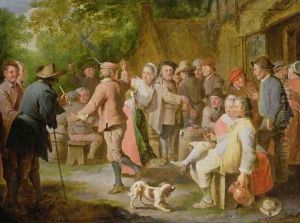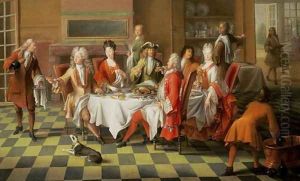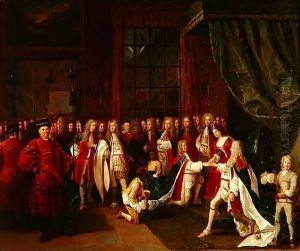Pierre Angelis or Angillis Paintings
Pierre Angelis, also known as Pieter Angellis or Pierre Angillis, was a Flemish painter of still lifes and genre scenes, active during the Baroque period. Little is known about his early life, including his exact birth year, which remains unrecorded, but he is believed to have been born in Dunkirk, which was then part of the Spanish Netherlands.
Angelis received his artistic training in Antwerp, a major center for art and commerce in the 17th century. He became a master in the Antwerp Guild of St. Luke in 1715, indicating that he was recognized as a professional artist by that time. His works reflect the influence of Flemish and Dutch masters, and he was particularly known for his detailed still lifes and scenes of everyday life that showcased his talent for capturing textures and light.
In pursuit of new clientele and experiences, Angelis traveled extensively. He worked in Paris from around 1721 to 1723, where his art was well received. He moved to England around 1724 and stayed there for a significant period, during which he gained considerable success. Angelis was appreciated for his genre scenes, which often depicted the interiors of taverns and other public places, filled with figures engaged in conversation, drinking, or playing music. These works were sought after by British collectors and contributed to his reputation.
Angelis' still lifes were equally impressive, often including kitchen scenes with a variety of objects, from gleaming copper cookware to vegetables and dead game, all rendered with meticulous detail and a rich palette. His ability to capture the varied textures of materials made his paintings particularly appealing to patrons who admired his realistic style.
The artist's last known work is dated 1734, and he is believed to have died in Rennes, France, in 1654. Despite the relative obscurity surrounding his life, Angelis' contributions to the Flemish tradition of genre painting and still life have been recognized by art historians. His works can be found in various museum collections and continue to be studied for their technical skill and their portrayal of 17th-century European life.


